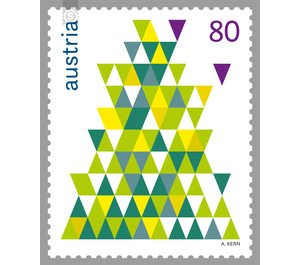Christmas - Austria / II. Republic of Austria 2015 - 80 Euro Cent
Theme: Religion & Spirituality
| Country | Austria / II. Republic of Austria |
| Issue Date | 2015 |
| Face Value | 80.00 |
| Edition Issued | 1,000,000 |
| Printing Type | offset |
| Stamp Type | Commemorative |
| Item Type | Stamp |
| Chronological Issue Number | 2576 |
| Chronological Chapter | OOS-OE2 |
| SID | 12016 |
| In 72 Wishlists | |
Erecting trees for the Celtic Julfest was already common in pre-Christian times. The evergreen trees were credited with the power to survive the dark season, symbolizing hope. It was said that evil spirits could be impeded by the green branches, as they were also hung on the houses, the intrusion. When exactly there was the first Christmas tree, there are different traditions. Was it the Freiburger Bäckerschaft that set up the first tree in 1419, or were they craftsmen from the city of Bremen who had the idea to celebrate Christmas under a fir tree? Or is it possible to follow the first documentary evidence that a Christmas tree stood in Strasbourg Cathedral in 1539? What is certain is that the custom from Germany gradually spread throughout the world. At first, the tree was decorated with paper roses, apples, nuts, dried fruit and small gifts, the first Christmas tree with candles is said to have been in 1611 in Silesia. Also in Goethe's "The Sorrows of the Young Werther" is reported by a spruce tree, as well in E. T. A. Hoffmann's "Nutcracker and Mouse King". From German lands, the custom of the candle-decorated Christmas tree at the beginning of the 19th century should finally have come to Austria - and allegedly by Henriette of Weilburg-Nassau, the wife of Archduke Carl. To create an unconventional and extraordinary Christmas brand that radiates modernity and is also intended to appeal to a young audience - this is the concern of Austrian Post, which finds expression in this brand. The graphic artist Anita Kern chose the greatest possible graphic reduction for her Christmas tree - a tree made of many colorful triangles: the light and dark green stand for the branches in different light incidence, the yellow ones for the candlelights, the white ones for the snow and the two violet triangles outside of the tree symbolize the darkness of the night.


